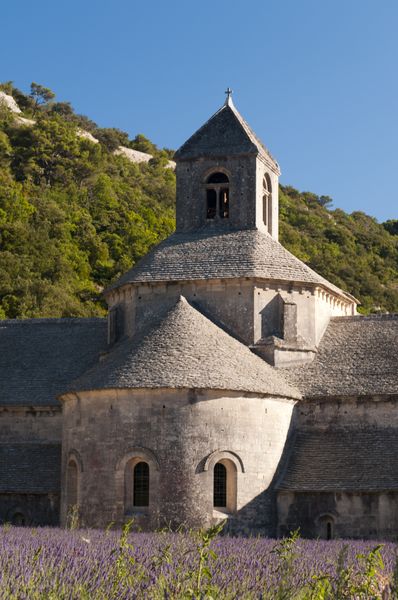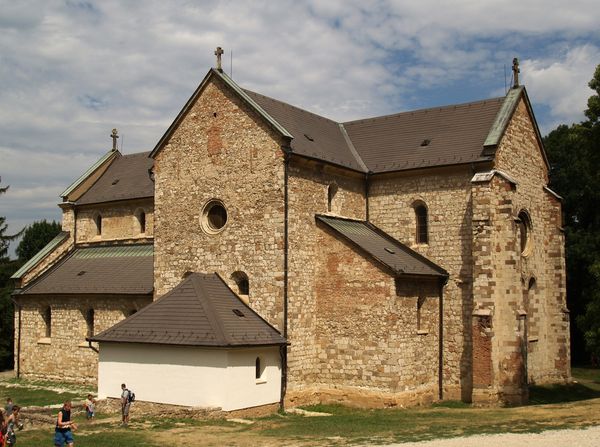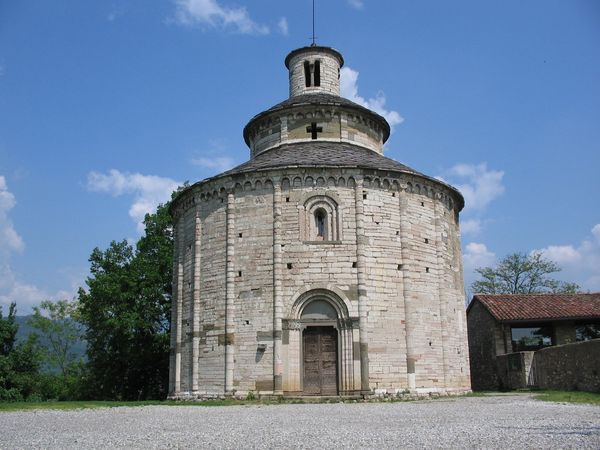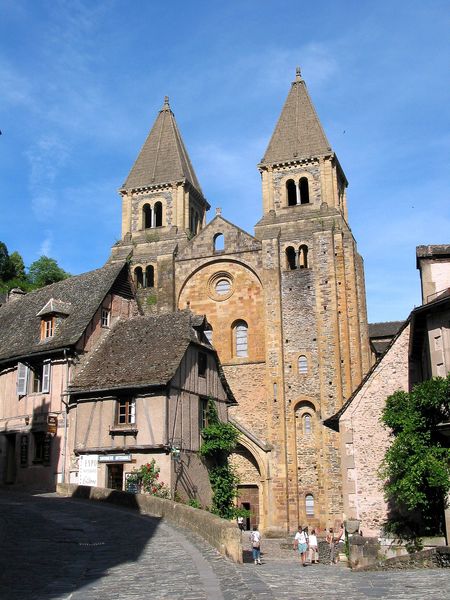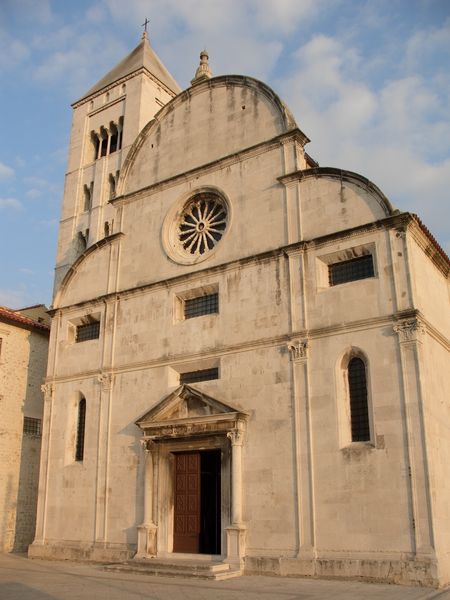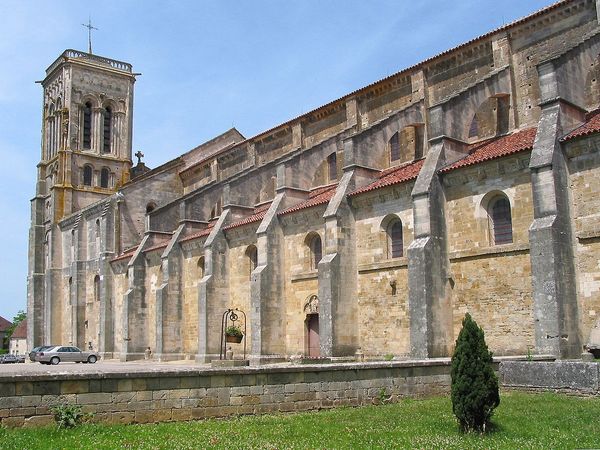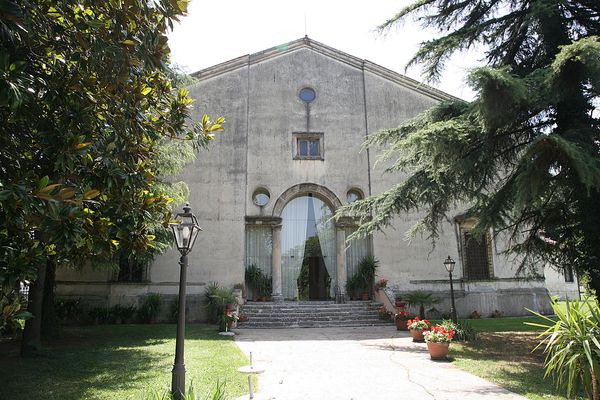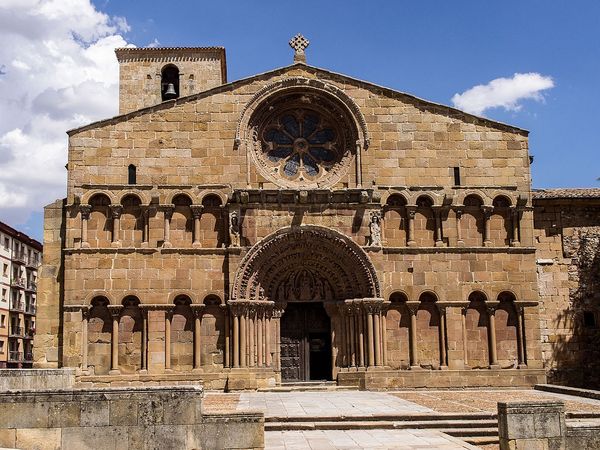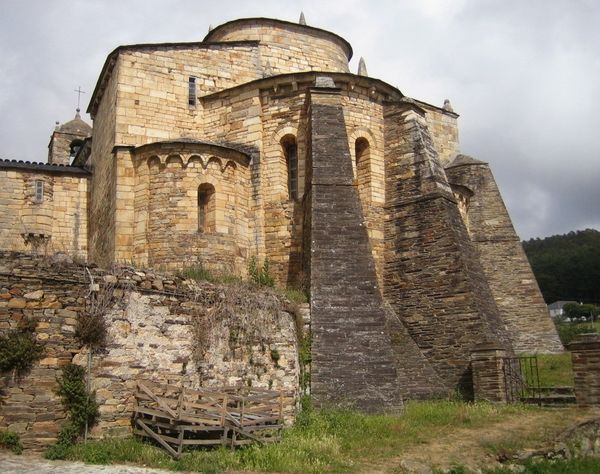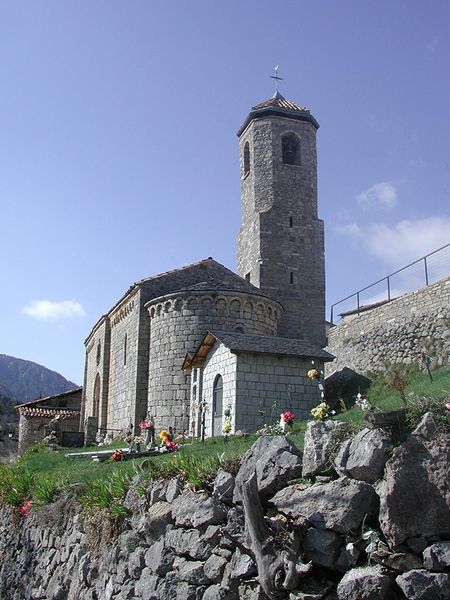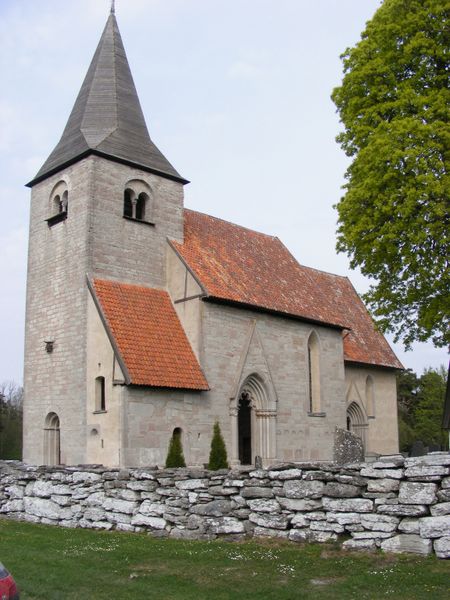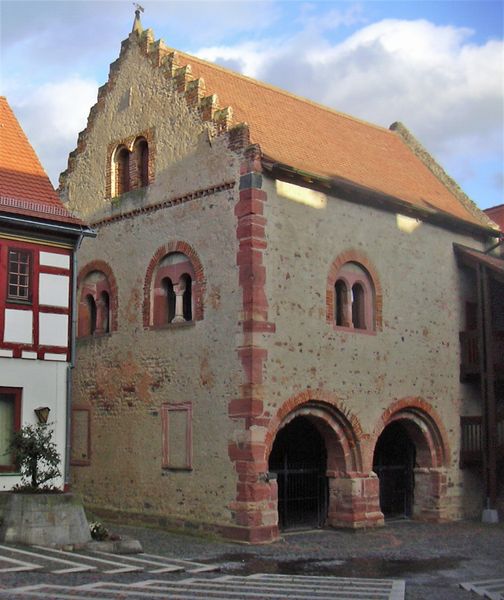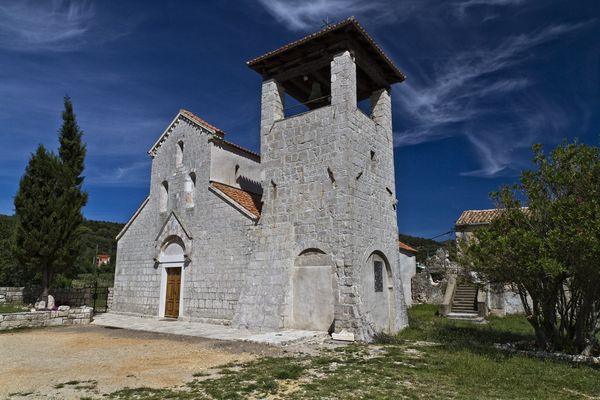
architecture
#
medieval
#
historic architecture
#
traditional architecture
#
romanesque
#
arch
#
architecture
#
historical building
Copyright: Public domain
The Cistercian Abbey in Belapatfalva, Hungary, was built in the Romanesque style using local stone, sometime between the 11th and 13th centuries. Notice the alternating bands of different colored stones on the façade; a decorative choice, but also reflective of the geological resources available at the time. Consider the labor involved in quarrying, transporting, and precisely laying each stone. This was all done by hand, a testament to the skill and dedication of the stonemasons. The sheer physicality of the construction is evident in the Abbey's mass and solidity. The design emphasizes function, with the church serving as a center for religious life and agricultural activity. It is a reminder that architecture is fundamentally a craft, shaped by available materials, the expertise of its makers, and the social needs it fulfills. This abbey exemplifies how craft and fine art traditions intertwine, enriching our understanding of both.
Comments
No comments
Be the first to comment and join the conversation on the ultimate creative platform.

